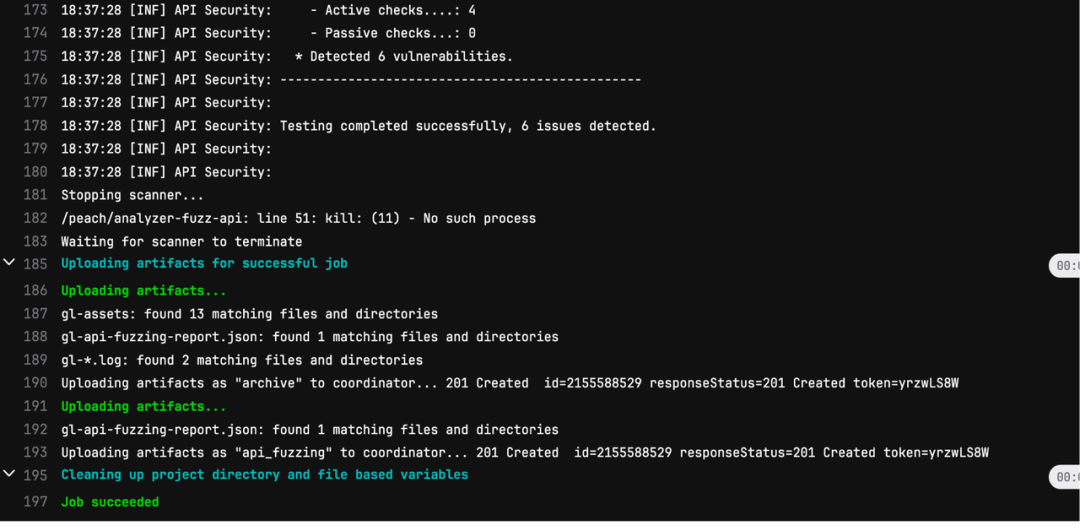ansible是什么?
Ansible是一个基于Python开发的配置管理和应用部署工具,现在也在自动化管理领域大放异彩。它融合了众多老牌运维工具的优点,Pubbet和Saltstack能实现的功能,Ansible基本上都可以实现。
Ansible能批量配置、部署、管理上千台主机。比如以前需要切换到每个主机上执行的一或多个操作,使用Ansible只需在固定的一台Ansible控制节点上去完成所有主机的操作。
ansible的特性:
①无agent的存在,不要在被控制节点上安装客户端应用
②基于模块工作,通过模块可以实现在被控制节点上执行命令操作
③幂等性,可实现多次操作的状态如果没有发生变化,则不会重复执行
④通过ssh协议与被控制节点通信
安装ansible:
yum install -y epel-release //先安装 epel 源
yum install -y ansible
vim /etc/ansible/hosts添加:
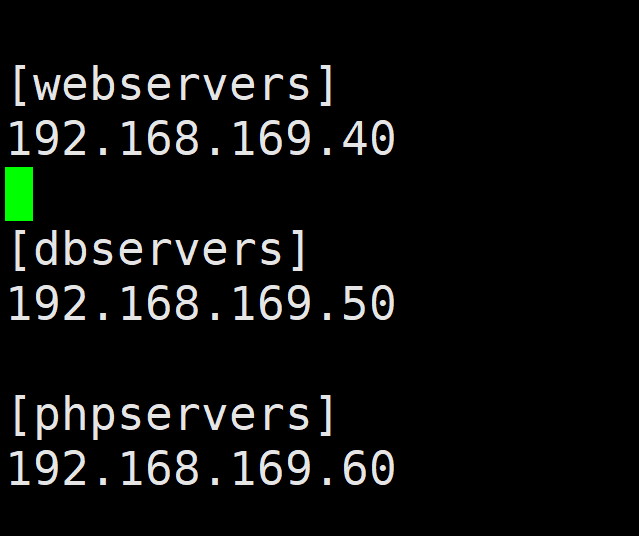
配置密钥对验证
ssh-keygen -t rsa -P '' -f ~/.ssh/id_rsa
yum install -y sshpass
sshpass -p '123456' ssh-copy-id -o StrictHostKeyChecking=no root@192.168.169.40
sshpass -p '123456' ssh-copy-id -o StrictHostKeyChecking=no root@192.168.169.50
sshpass -p '123456' ssh-copy-id -o StrictHostKeyChecking=no root@192.168.169.60
ansible 命令行模块:
ansible-doc -l 查询已安装的模块

ansible-doc -s 模块名 查询当前模块的使用信息
①command 在远程主机上使用linux命令
ansible 192.168.169.40 -m command -a ls

ansible all -m command -a ls
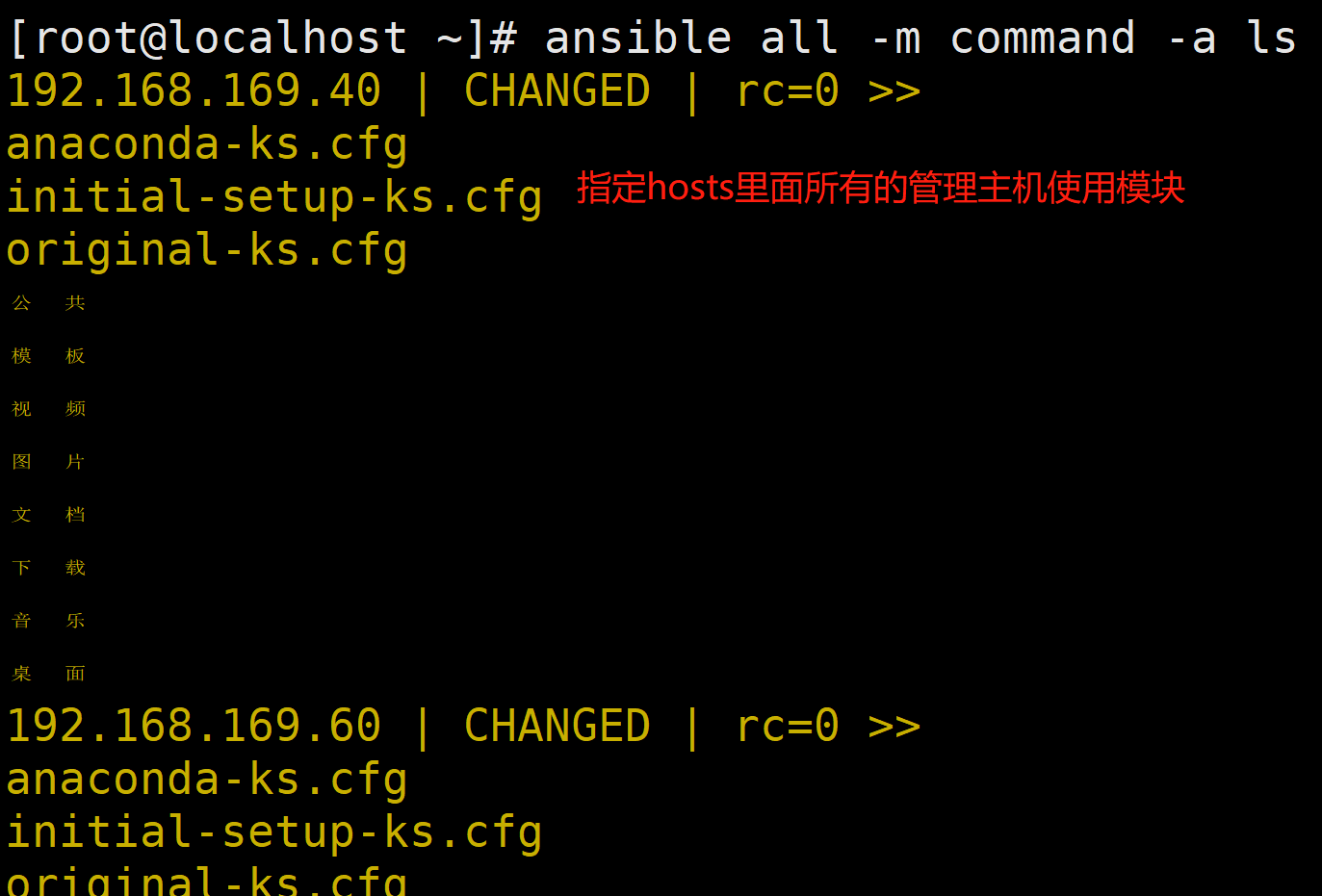
ansible webservers -m command -a ls
ansible webservers -m command -a 'creates=/opt/123.sh ls' 
ansible webservers -m command -a 'removes=/opt/123.sh ls'
command不可以使用管道符和重定向等特殊符号
②shell 在远程主机执行命令,相当于调用远程主机的shell进程,然后在该shell下打开一个子shell运行命令(可以使用管道符和重定向等特殊符号)
ansible webservers -m shell -a 'echo 123456 | passwd --stdin "test" '

③cron 远程主机执行定时任务
//常用的参数:
minute/hour/day/month/weekday:分/时/日/月/周
job:任务计划要执行的命令
name:任务计划的名称
user:指定计划任务属于哪个用户,默认是root用户
state:present表示添加(可以省略),absent表示移除
ansible webservers -m cron -a 'minute="*/1" job="/bin/echo helloworld" name="test crontab"'

ansible webservers -a 'crontab -l'(默认使用command模块)

ansible webservers -m cron -a ' name="test crontab" state=absent '
④user 远程主机用户管理的模块
//常用的参数:
name:用户名,必选参数
state=present|absent:创建账号或者删除账号,present表示创建,absent表示删除
system=yes|no:是否为系统账号
uid:用户uid
group:用户基本组
groups: 用户所属附加组
shell:默认使用的shell
create_home=yse|no: 是否创建家目录
password:用户的密码,建议使用加密后的字符串
remove=yes|no:当state=absent时,是否删除用户的家目录
ansible]# ansible webservers -m user -a 'name=dxl uid=5425 groups=wheel create_home=yes'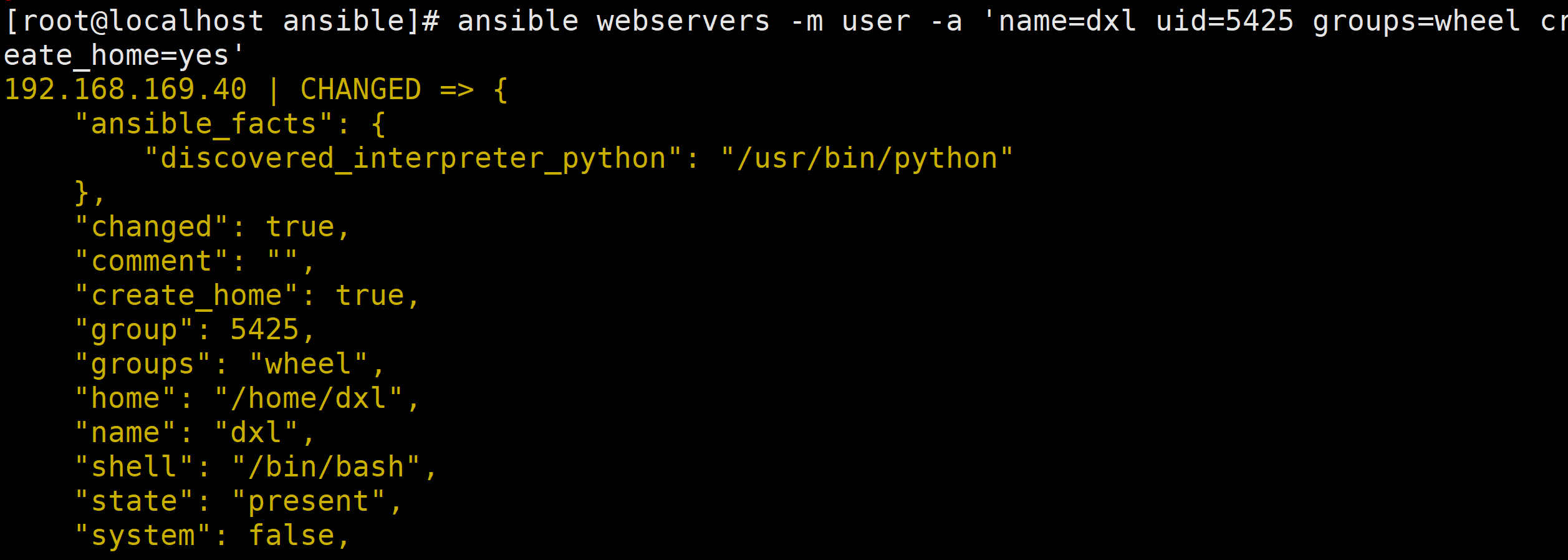
ansible webservers -m command -a 'tail /etc/passwd'

⑤group 远程主机组管理的模块
ansible webservers -m group -a 'name=yht system=yes' #创建mysql组

ansible webservers -a 'tail /etc/group'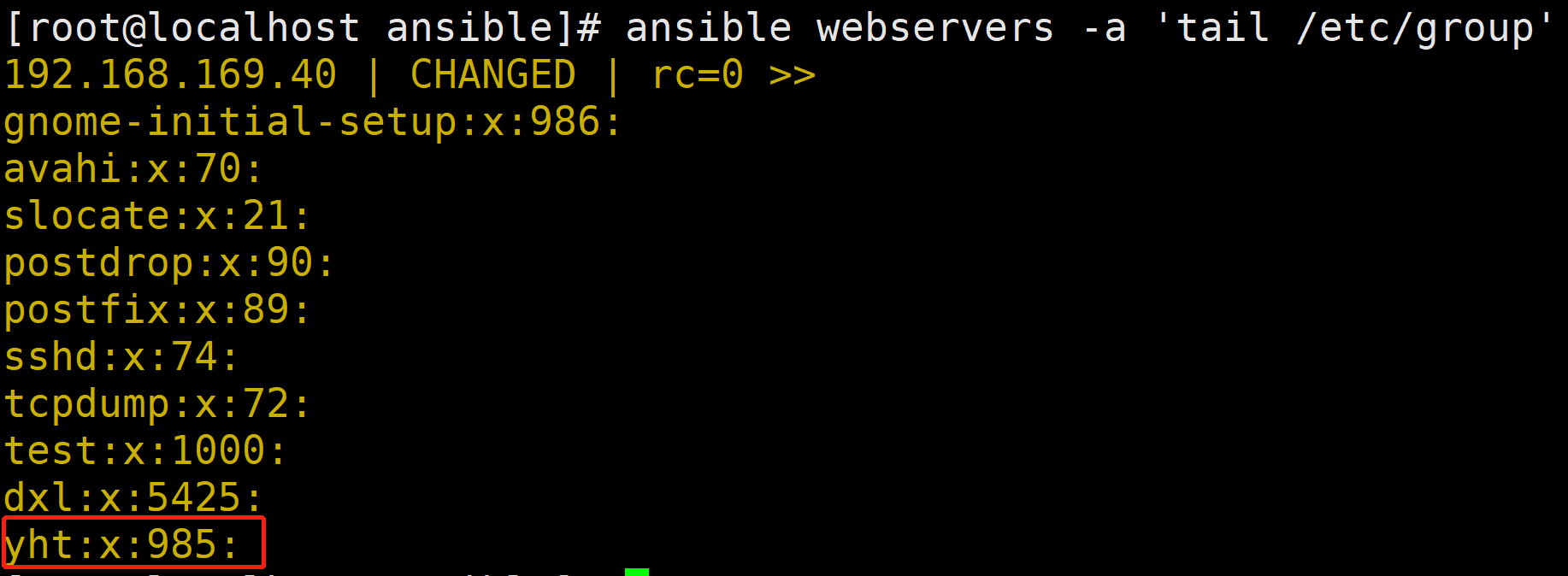
⑥copy 用于复制指定主机文件到远程主机的
//常用的参数:
dest:指出复制文件的目标及位置,使用绝对路径,如果源是目录,指目标也要是目录,如果目标文件已经存在会覆盖原有的内容
src:指出源文件的路径,可以使用相对路径或绝对路径,支持直接指定目录,如果源是目录则目标也要是目录
mode:指出复制时,目标文件的权限
owner:指出复制时,目标文件的属主
group:指出复制时,目标文件的属组
content:指出复制到目标主机上的内容,不能与src一起使用
ansible webservers -m copy -a 'src=/etc/fstab dest=/opt/fstab.bak owner=root mode=640'

ansible webservers -m command -a 'ls /opt'

ansible webservers -m copy -a 'content="this is my fucking son dxl" dest=/opt/dxl.sh'

⑦file 对远程主机设置文件属性
//常用的参数:
src:指出源文件的路径,可以使用相对路径或绝对路径,支持直接指定目录,如果源是目录则目标也要是目录
mode:目标文件的权限
owner:目标文件的属主
group:目标文件的属组
path:指定文件的目录
state:touch创建、absent删除、link软连接
ansible webservers -m file -a 'path=/opt/yht.txt state=touch'

ansible webservers -m file -a 'path=/etc/fstab.link src=/opt/fstab.bak state=link'
⑧hostname 管理远程主机上的主机名
ansible webservers -m hostname -a 'name=xxx'


⑨ping 检测远程主机的连通性
ansible webservers -m ping

⑩yum 在远程主机上安装与卸载软件包
ansible webservers -m yum -a 'name=httpd'

ansible webservers -m yum -a 'name=httpd state=absent' 卸载httpd
⑪systemd/service 远程管理服务的状态
//常用的参数:
name:被管理的服务名称
state=started|stopped|restarted:动作包含启动关闭或者重启
enabled=yes|no:表示是否设置该服务开机自启
runlevel:如果设定了enabled开机自启去,则要定义在哪些运行目标下自启动
ansible webservers -a 'systemctl status httpd'

ansible webservers -m systemd -a 'name=httpd enabled=yes state=started'
⑫script 实现远程批量运行本地的 shell 脚本
ansible dbservers -m script -a
⑬mount 挂载文件系统
//常用的参数:
src:定义挂载设备的路径
path:定义挂载到哪个目录,必须指定
fstype:指定挂载文件的系统类型,必须指定,xfs、iso9660、nfs...
opts:定义挂载的参数,defaults、rw、ro...
state:定义挂载的状态,mounted(进行挂载,修改/etc/fstab信息)、absent(永久性卸载,并修改 /etc/fstab信息)、unmounted(临时卸载,不修改/etc/fstab信息)
ansible dbservers -m mount -a 'src=/dev/sr0 path=/mnt state=mounted fstype=iso9660'










